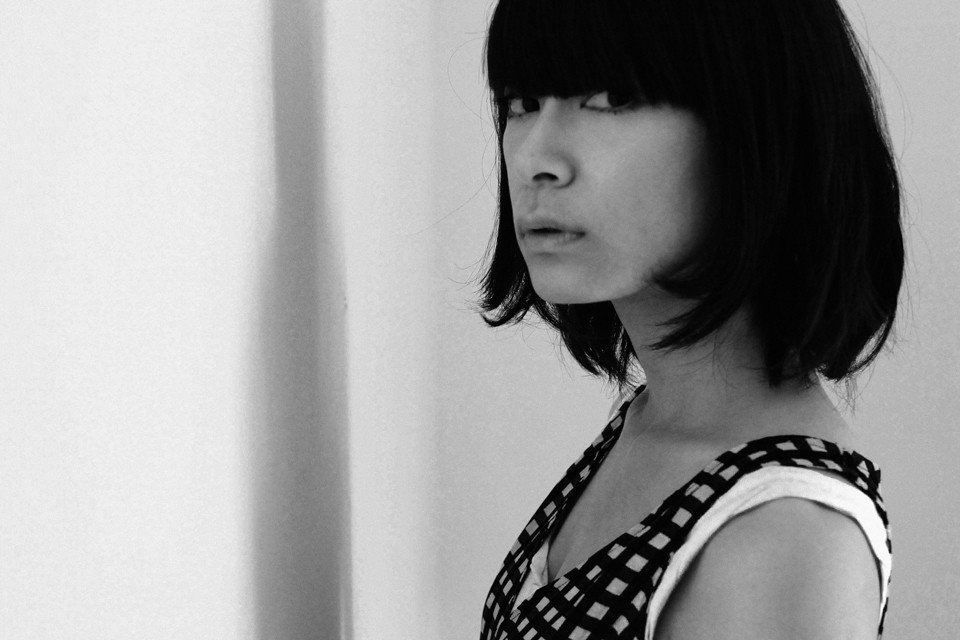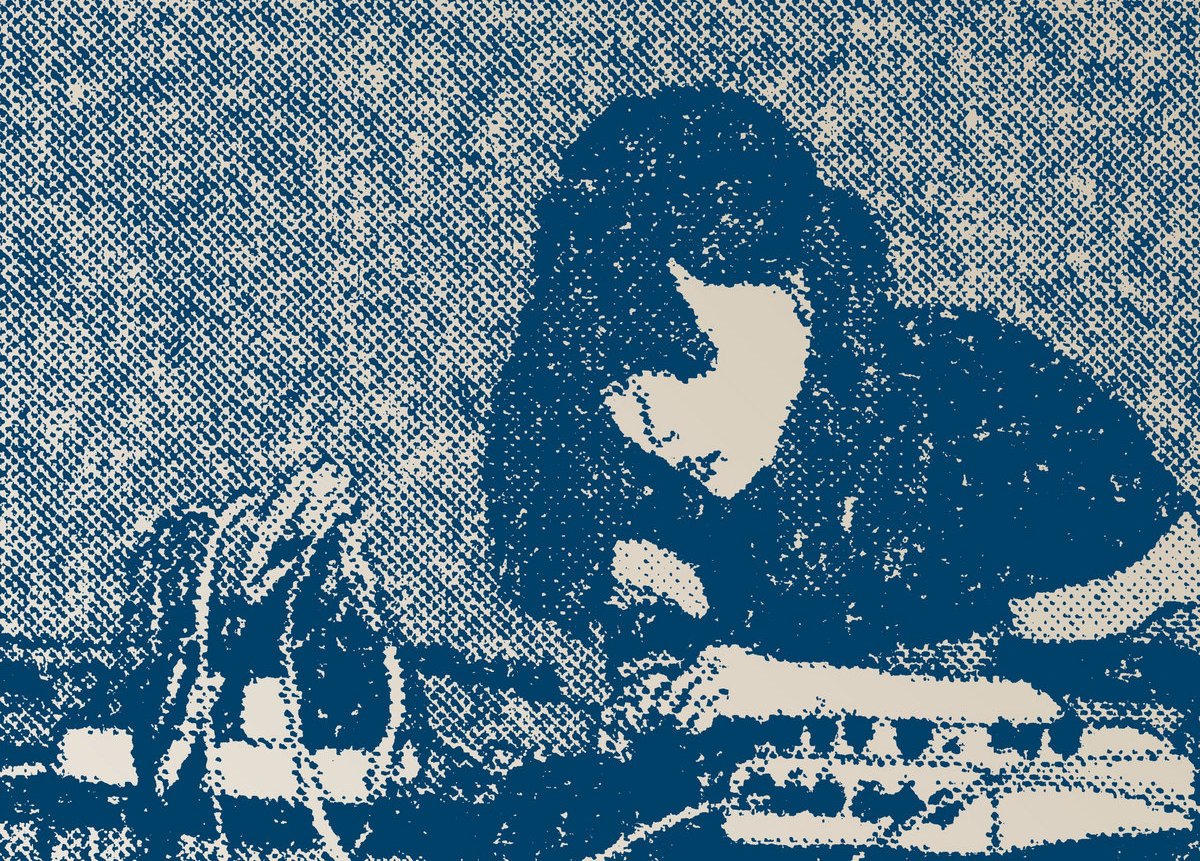A GUIDE TO JAPAN’S ELECTRONIC WOMEN- FROM GLITCH POP TO SYNTH-POP

Throughout different eras of Japanese music, there has always been a key musical breakthrough, a rich history of diverse sounds, and sub-genes in the mainstream and underground scene coexisting together.
The technological advances, set forth by Japan, contributed to a paradigm shift in mainstream and underground music. The invention of iconic tools such as the Roland TR-808, TB-303, and the Akai MPC fueled a movement focused on electronic sound. The electric pop-oozing from the synthesizers of YMO and the [qualitative] noise rock of Merzbow and Keiji Haino during the late 70s opened the gates of a new catalog of sounds in Japanese music in the 1970s.
PHEW
As the 1980s approached, the blues and pinks of Hiroshi Nagai's covers were matched by the sounds of its accompanying new genre, City pop. This genre unfamiliar to many outside the geography of the Japanese archipelago has had a surge in popularity in recent years and global recognizance due to a suggestion algorithm on YouTube. During this time, the polished and manufactured golden idol era had begun, while on the sidelines, Jun Togawa, an avant-garde icon, was utilizing her music and image to comment and challenge femininity, idol culture, and gender expectations. Sub-genres and micro-genres would exponentially be reproduced in this time, Shibuya Kei being an example.
Although all of these electronic devices and styles contributed to the development of different genres and sounds from the 1970s to the early 1990s, the shift in affordability brought about by Japan's economic bubble burst was the most significant alteration. From the 1990s to the early 2000s, artists could purchase a plethora of equipment that had previously been unavailable, and this would enable a wider palette of sounds that stemmed from new techniques and experimentation.
KYOKA
The music industry was not indifferent to this genesis but rather instrumental, coining the term and breakthrough genre of J-pop. This new genre would showcase chart-topper stars such as B'z, Ayumi Hamasaki, and Namie Amuro. Other popular artists of the time would have a more unconventional approach to pop such as "UA", Hikaru Utada, and Ringo Sheena, breaking away from the traditional image set by the popular idol groups of their time, with lyrics often ironic and melancholic, combining J-pop with rock, jazz, R&B, and blues, and fighting to control their music and image in an industry dominated by men. Haruomi Hosono and Ryuichi Sakamoto are often credited as the pioneers who godfathered Japanese pop and helped shape the sound throughout the years for multiple artists. Producers like Capsule’s Yasutaka Nakata were expanding their electro-pop sound to the idol group Perfume and Kyary Pamyu Pamyu. Japanese house producers like Soichi Terada, Shinichiro Yokota, and Satoshi Tomiie created classic tracks for the house scene worldwide.
TENTENKO
While the components of this fabric that is electronic music in Japan are vast, this isn’t a list of the well-known legends but rather of the cult classics and lesser-known female musicians. As it happens in many scenes, the electronic and experimental scenes have had a tendency to be a male-dominated and although the list doesn’t cover all the women who have worked and keep working within this movement and its diverse genres, it aims to showcase the importance of key contributions done by women, many who have broken away from traditional idol & J-pop molds while paving the way for others. This guide, from the 80s to the present, accompanied by a playlist, serves as an introduction to the work of these artists and their world.
AYA GLOOMY
Tokyo-born and based producer and fashion it-girl, Aya Gloomy began learning how to make music on her own when she was 16 years old, and she has been self-producing and writing her songs since. Aya cites influences such as Jun Towaga, Björk, and Chiemi Manabe.
Her unique blend of catchy surreal and ethereal pop has earned her a spot among the year's most distinct synthpop. In 2017, Aya released "Kanjiru," a five-track EP that premiered at her vintage pop-up at Pom Pom Shop in Harajuku.
Her sophomore album Tokyo Hakai was released in 2021 and features a similar production to her previous work, but with a more calm-sounding production. The album's opening features an ominous synthesizer with what appears to be recordings about the 2020 Japanese Olympic Games, a recurring ambiance throughout the album with songs like "DenEN" and micro creature.
TUJIKO NORIKO
Born in Osaka and currently based in France, Noriko Tujiko has been making music since the early 2000s. Having released 16 highly regarded cult classic albums, under labels such as editions mego, Fat Cat, and Room 40, which are frequently home to abstract and harsh noise artists, Tujiko’s music stands out from their rooster with her experimental sound with pop sensibilities. Her avant-garde pop has often drawn comparisons to Björk, one that, while easy to see, is not entirely precise. Throughout her extensive discography, Tujiko has created an electronic sound that feels organic. Beautifully layered with her vocals, synths, samples, and glitches, they make a comforting sound that can easily blend in the background but one that also demands your attention with its atmospheric layers unraveling from minimal to chaotic. Tujiko sings mostly in Japanese, with the occasional English with a gentle voice that allows her to create an intimate environment.
Her 2002 album “Hard Ni Sasete” received an honorary mention at the Prix Ars Electronica. One of her more experimental works “Shore Angel”, the album's first track, sets the tone for a haunting and mesmerizing carousel of contrasting sounds in peaceful coexistence. The majority of the songs are over the 5 minutes mark, making this a colossal album.
Tujiko's album covers seem to match the music featured on them; the collages on “Shojo Toshi” [2001] and “Hard Ni Sasete” [2002] album covers evoke the album's scatteredness, poetic nature, and layering, respectively, while her album “From Tokyo to Naiagara” [2003] presents us a minimalist portrait of Tujiko to accompany a personal, balanced and melodic album, in which Tujiko is the narrator of a lonely story. The translation on the CD liner notes describes a constantly moving melancholic, somber story and, even if you don't understand Japanese, Tujiko provides enough information and atmosphere to construct a narrative with its lush and warm sounds.
Her most recent album, “Kuro”, was released in 2019 in support of Joji Koyama's and Noriko Tujiko's film of the same name, in which she also stars as one of the lead characters.
POiSON GiRLFRiEND
While living abroad in London, Noriko Sekiguchi (or nOrikO) would often frequent the city’s club scene, ultimately becoming a fan of its jungle dub, techno, and ambient scene. Inspired by it, she set out to explore it on her own terms.
In 1992, she released "Melting Moment", a diverse EP of gentle synths and strings that ranged from dream pop to shoegaze, songs that would perfectly fit a Wong Kar Wai scene. "Hardly Ever Smile", her most famous track, is featured in this six-song project that caresses its listener with its romantic dream-pop with a more acoustic style.
Her following album "Love Me", released in 1994, features a more electronic trip-hop environment. Tri-lingual, Japanese, English, and French are combined in song to set forth a diverse sound that clashes with noise elements. Although most of the project's sound is akin to French house, "Tout est Rouge '' brings a darker setting to contrast the room.
Her music has been seeing some more attention over the years with “Melting Moment” becoming a cult classic, making fans wonder if this album will soon be featured in the YouTube algorithm for more to discover.
Phew
Born in Osaka, Phew, born Hiromi Moritani, has been an iconic figure in the punk/noise scene since the '70s, starting her career as a member of the Japanese punk band Aunt Sally, created after a 17-year-old Moritani fleed to London to see the Sex Pistols. While the group shorty disbanded in the 1980s, this would allow Moritani the chance to start working on her solo project’s going on to collaborate with acts such as CAN, Neubaten, Ana da Silva, Jim O’ Rourke, Ryuichi Sakamoto, who worked on her first single, amongst many others.
Her work ranges from noise to drone, and sometimes to some oddly calming ambient work. Throughout her lengthy career, she has created some unique pieces such as in 2018 with “Voice Hardcore”, an album composed solely based on her voice, overdubbing her vocals to create a surreal eerie melody noise poem. Her latest album released in 2021, “New Decade”, is a subtle yet intriguing album that sees her return to the label Mute.
KYOKA
Producer, sound artist and multi-instrumentalist Kyoka has been experimenting with music since the age of 7, when she started scratching tapes back and forth, cutting and editing them, fascinated by the ability to manipulate these to create her own sound. After she left her home to study economics in Tokyo, she purchased a Roland MC-505, a drum machine, and a sequencer, which would lead to the creation of her first album “Ufunfunfufu” in 2008.
An important figure in the electronic scene, Kyoka became the first female solo artist on the innovative and acclaimed electronic label Raster-Noton. Her approach to music is diverse: field recordings, voice audios, textures, crackles, and heavy repeated beats are all part of the sounds she mixes for her experimental yet danceable recipe.
A quote that perfectly captures her uniqueness is from Ryuichi Sakamoto: "Panic! It sounds like a toy box turned upside down. How can she make such pretty and chaotic sounds? I love it!”
“IS” [is superpowered], her most recent album, was published in 2014 and fully embodies her danceable, experimental, and immersive attention-commanding beats for big spaces.
TENTENKO
Born in Hokkaido in 1990, Tentenko is a producer, singer, DJ, and film director. Former member of BiS (brand-new idol society), an alternative anti-idol band known for their edgy image, chaotic punk shows, and collaborations with noise band Hijokaidan. Following the group disbanding in 2014, Tentenko began focusing on her solo career, eventually creating her own record label, "Tenten Records," after a successful crowdfunding campaign that raised over one million yen in one day.
Tentenko would go on to release a monthly steady stream of EPs, mixes, and singles through her label, finally releasing an official nationwide debut single in 2015, "Goodbye, Good Girl," an 80s-inspired synth-pop track with a VHS video to promote a compilation EP that would focus more on her pop image. She has since released two self-produced albums.
As she alternates between a pop sound reminiscent of her idol days and a more experimental one, Tentenko's duality can be traced back to 2006, before BiS, when she and a childhood friend Takizawa Tomoe created an ambient project called “FLORIDA”.
Tentenko explores numerous musical styles with lively and curious productions, with a harsh and rigid sound that she transforms into her own. Her monthly series of releases came to an end in January 2020, after almost five years, with over 15 releases ranging from ambient, noise, techno, hyper-pop, and 80s synth-pop.
Tentenko and the noise veteran Toshiji Mikawa have also formed a noise group called MikaTen, for which they released an LP titled “Angel Noise” in 2017, a more chaotic noise album mixed with Tentenko’s soft vocals and oddly rhythmic beats.
SERANI POJI
Serani Poji is a distinctive entry on the list, not necessarily for its softer tone but because it was originally created as a fictional artist for SEGA's 1999 video game ROOMMANIA #203, in which "Serani Poji" is the pop star band of the world.
The game's story and the concept were created by one of the members of “Serani Poji” Tomoko Sasaki. Having previous experience with video game soundtracks, Sasaki worked on the composition, keyboard, and lyrics, while Yukichi, a member of the J-pop band CECIL, provided vocals. After finding success outside of the game, Sasaki continued the Serani project, this time with Yumi Higashino for vocals for their second album, “One-Room Survival”, released in 2002.
After two albums, Serani had managed to solidify themselves as a real group, keeping the first album's charming and contagious sounds. The group went on a hiatus in 2004 and resumed activity in 2010 with the release of a new album “ Merry Go Round Jailhouse”, this time with Sasaki providing the vocals.
Their music is a blend of bossa nova, downtempo, lounge-inspired melodies, and light electronics for a peaceful feel, with the occasional break-beat element and classic house piano chord. Resulting in a discography of serene yet constantly shifting energy.
Tommy february6
A scene with musicians that has group projects and solo projects paired with the diversity of genres and subgenres cannot do without alter-egos. Tommy february6 is the alter-ego of vocalist Tomoko Kawase, former vocalist of the J-rock band The Brilliant Green.
Under this alias, she has created a cute quirky pop persona that is not as innocent as she appears. As with many other artists mentioned before, British music inspired her, particularly 1980s synth-pop. She is a time traveler, and this is evident in tracks like “e-mail more", “chOOSe mE or Die”, and her Strawberry Switchblade cover "Since Yesterday', where she manages to capture and replicate that 80s sound as if it were brought to the present through a careful combination of keys, wires, and plugins.
“Lonely in Gorgeous” is one of her most well-known songs, having served as the opening theme for Ai Yazawa's anime "Paradise Kiss,"; it’s a powerful opener thanks to its infectious high energy and accompanying addicting 8-bit synth foundation that flows seamlessly with her vocals, for an easy-to-sing-along chorus. The video feature Tommy drinking, alluding to her "not so innocent persona", and it also nods and mimics the Beastie Boys' "Sabotage" video.
Tommy's concepts and production aren't taken as seriously due to her bubble gum pop style, but they're no less enthralling and well-crafted than those working with an experimental sound; Tommy's sound and persona are experimental in their own way. Tommy has another alter ego called Tommy heavenly6 which also features the same cute aesthetic and persona only this time it's paired with a rock sound.
About the author:
Carolina Mercado is a Puerto Rican artist that focuses on photography. She has a strong passion for music and is a contributing DJ at radio underground PR.
















